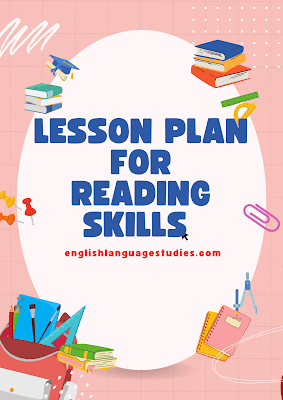Grade Level : Secondary / Higher Education
Duration: 60 minutes
Subject: English / Language Arts
Skill Focus: Reading Comprehension, Skimming, Scanning, Critical Thinking
Lesson Objectives:
By the end of the lesson, students will be able to:
- Identify and apply different reading strategies (skimming, scanning, intensive reading).
- Improve comprehension by analyzing texts effectively.
- Develop critical thinking through discussion and questioning.
- Expand vocabulary and understand contextual meanings.
Materials Needed:
- A short article, story, or passage (preferably from a newspaper, magazine, or book)
- Whiteboard & markers
- Handouts with comprehension questions
- Dictionary (physical or digital)
Lesson Procedure:
1. Warm-up Activity (10 minutes)
- Brainstorming: Ask students to share their reading habits. What do they read the most? Social media posts, books, news?
- Quick Exercise: Show a jumbled sentence on the board and ask students to arrange it correctly. This will activate their focus on sentence structure.
2. Introduction to Reading Strategies (10 minutes)
- Skimming: Explain that skimming is reading quickly to get the general idea. Give a short paragraph and ask students to find the main idea in 30 seconds.
- Scanning: Explain scanning as searching for specific information. Give a passage and ask them to find a particular word or number.
- Intensive Reading: Discuss how deep reading is used for analysis and critical thinking. Provide a paragraph with hidden meanings or implications.
3. Guided Reading Activity (20 minutes)
- Distribute an article or short story.
- Ask students to first skim through it in one minute.
- Then, give them a list of keywords and ask them to scan for these words in the text.
- Finally, they will read the passage carefully and answer comprehension questions.
- Discuss answers and encourage students to justify their responses.
4. Group Discussion (10 minutes)
- Ask open-ended questions about the text:
- What do you think the author’s message is?
- Do you agree with the author? Why or why not?
- How does this information relate to real life?
- Encourage students to express their opinions and challenge each other’s ideas.
5. Wrap-up & Assessment (10 minutes)
- Quick Quiz: A few multiple-choice or short-answer questions about the reading strategies.
- Reflection: Ask students to write a short paragraph on how they will use these strategies in daily life.
- Homework: Assign a short article with questions to practice skimming and scanning at home.
Assessment & Evaluation:
- Active participation in discussions
- Accuracy in comprehension questions
- Application of reading strategies in tasks
- Reflection responses
Differentiation Strategies:
- For struggling readers: Provide a simplified text and guided questions.
- For advanced readers: Assign a longer, more complex article and critical thinking questions.
Conclusion:
This lesson equips students with essential reading skills, helping them read efficiently and critically. Encouraging discussion ensures they engage with the text beyond just words on a page.
Lesson Plan: Nouns for A1 and A2 Levels
Lesson Plan: Pronouns for A1 and A2 Levels
